Kitchen floor plans are an essential element in designing a functional and efficient kitchen. Whether you are building a new home or remodeling your existing kitchen, the floor plan is the foundation upon which the rest of the design is built. A well-designed kitchen floor plan can make all the difference in creating a space that is both beautiful and functional.

Understanding Kitchen Floor Plans involves knowing the different types of layouts and key elements that make up a functional kitchen. The layout of your kitchen should be designed to optimize the available space, and should take into consideration the workflow, storage, and traffic flow in the kitchen. There are several types of kitchen floor plans to choose from, each with its own set of advantages and disadvantages. The key to choosing the right floor plan is to consider your lifestyle, cooking habits, and the size and shape of your kitchen.
Understanding Kitchen Floor Plans
Kitchen floor plans are an essential aspect of designing a functional and practical kitchen. A kitchen floor plan is a detailed drawing that shows the layout of the kitchen, including the location of appliances, cabinets, countertops, and other features.

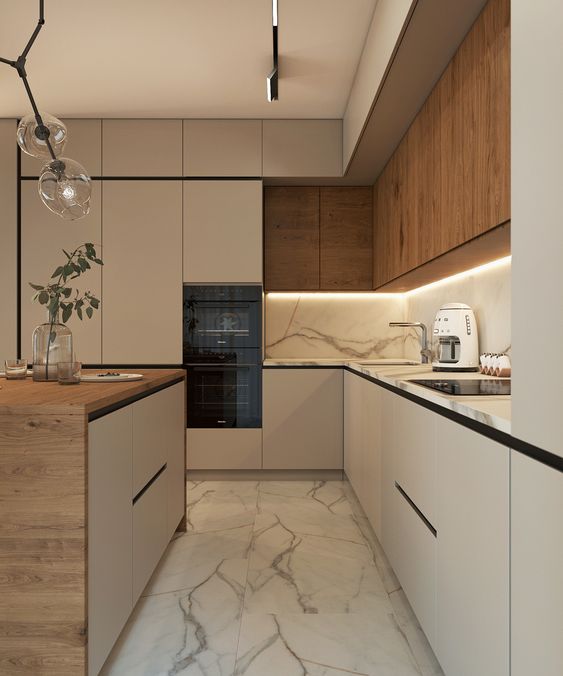
There are several types of kitchen floor plans, including the U-shaped, L-shaped, galley, and open-concept layouts. Each of these layouts has its advantages and disadvantages, depending on the size and shape of the kitchen and the homeowner’s preferences.
Get insights into kitchen floor plans, highlighting the importance of layout and functionality in kitchen design with this blog. It provides ideas for creating efficient, aesthetically pleasing kitchen spaces with Chicago floor refinishing that cater to various cooking and dining needs.
The U-shaped kitchen floor plan is a popular choice for larger kitchens, as it provides ample counter space and storage. The L-shaped layout is ideal for smaller kitchens, as it maximizes space and allows for easy movement between work areas. The galley layout is a narrow kitchen that maximizes space and is ideal for smaller homes or apartments. The open-concept kitchen is a modern design that combines the kitchen, dining, and living areas, creating a spacious and functional living space.
When designing a kitchen floor plan, it is essential to consider the kitchen’s function and the homeowner’s needs. For example, if the kitchen is primarily used for cooking and baking, it is important to ensure that there is enough counter space and storage for appliances and utensils. If the kitchen is used for entertaining, it may be necessary to include a large island or bar area for seating and serving.

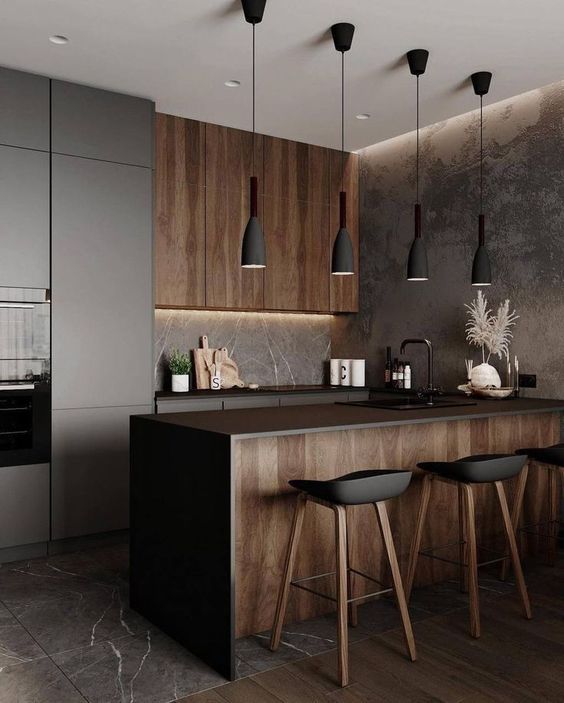
There are several resources available for homeowners who are designing their kitchen floor plans, including online tools like RoomSketcher and 3D floor plans. These tools allow homeowners to visualize their kitchen floor plan and make changes before finalizing the design.
Overall, understanding kitchen floor plans is essential for creating a functional and practical kitchen that meets the homeowner’s needs. With careful consideration of the kitchen’s function and the homeowner’s preferences, a well-designed kitchen floor plan can transform a house into a home.
Key Elements of a Kitchen Layout
A well-designed kitchen layout is essential for efficient and comfortable cooking. There are several key elements to consider when planning a kitchen layout:
Work Triangle
The work triangle is the path between the three primary work zones in a kitchen: the sink, stove, and refrigerator. A well-designed work triangle can make cooking and cleaning more efficient by reducing the distance between these areas.
Counters and Appliances
Counters are an important component of any kitchen layout, as they provide workspace for food preparation and cooking. Appliances like ovens, cooktops, microwaves, and compact easy clean slow juicers should be placed near counters to create a functional work zone.
Sink and Refrigerator
The sink and refrigerator are two of the most frequently used areas in a kitchen. They should be easily accessible and located near the work triangle for maximum efficiency.
Cabinets and Storage
Cabinets and storage are critical to keeping a kitchen organized and clutter-free. They should be placed in convenient locations and designed to maximize storage space.
Counter Space
Counter space is essential for food preparation and cooking. A kitchen should have enough counter space to accommodate appliances, utensils, and food items.
Work Zone
The work zone is the area where most of the cooking and food preparation takes place. It should be designed to accommodate the work triangle and provide ample counter space and storage.
By considering these key elements, homeowners can create a functional and efficient kitchen layout that meets their needs.
Types of Kitchen Floor Plans
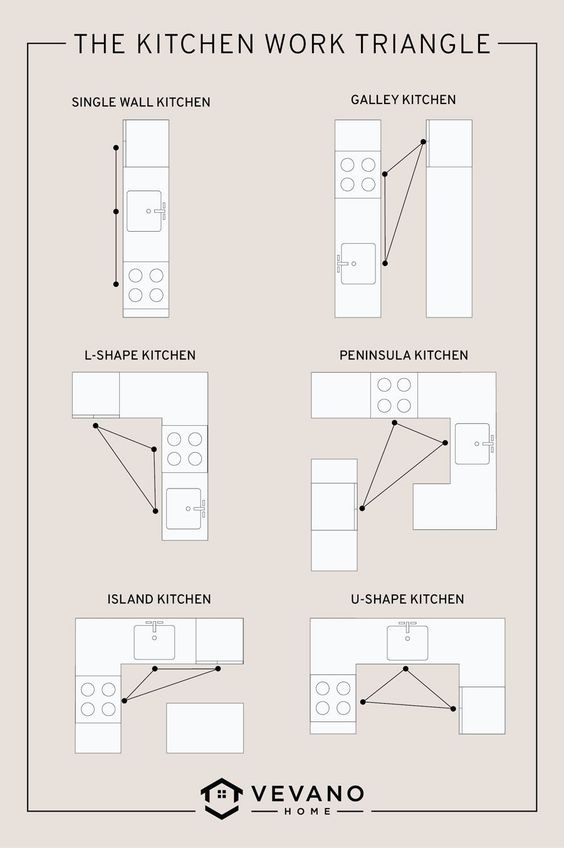
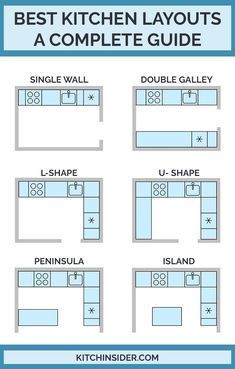
When it comes to designing a kitchen, choosing the right floor plan is crucial. A well-designed kitchen floor plan can make all the difference in terms of functionality, flow, and overall aesthetic appeal. Here are some of the most common types of kitchen floor plans:
L-Shaped Kitchen
An L-shaped kitchen has two adjacent walls that form an L-shape. This type of floor plan is great for maximizing corner space and creating an efficient work triangle between the sink, stove, and refrigerator. It also allows for plenty of counter space and storage.
U-Shaped Kitchen
A U-shaped kitchen has three walls that form a U-shape. This type of floor plan is ideal for larger kitchens and provides ample counter space and storage. It also allows for a clear work triangle between the sink, stove, and refrigerator.
Galley Kitchen
A galley kitchen has two parallel walls with a walkway in between. This type of floor plan is great for smaller kitchens and provides an efficient work triangle. It also allows for plenty of counter space and storage.
Single Wall Kitchen
A single wall kitchen has all appliances and countertops on one wall. This type of floor plan is perfect for small spaces and provides a streamlined look. However, it can be challenging to create an efficient work triangle in a single wall kitchen.
L-Shaped Kitchen with Island
An L-shaped kitchen with an island adds extra counter space and storage. It also provides a great place for entertaining and casual dining.
Galley Kitchen with Island
A galley kitchen with an island adds extra counter space and storage. It also allows for a clear work triangle and provides a great place for entertaining and casual dining.
U-Shaped Kitchen with Island
A U-shaped kitchen with an island adds extra counter space and storage. It also allows for a clear work triangle and provides a great place for entertaining and casual dining.
Overall, there are many different types of kitchen floor plans to choose from. The right floor plan for your kitchen will depend on your space, needs, and personal style.
Kitchen Islands and Peninsulas

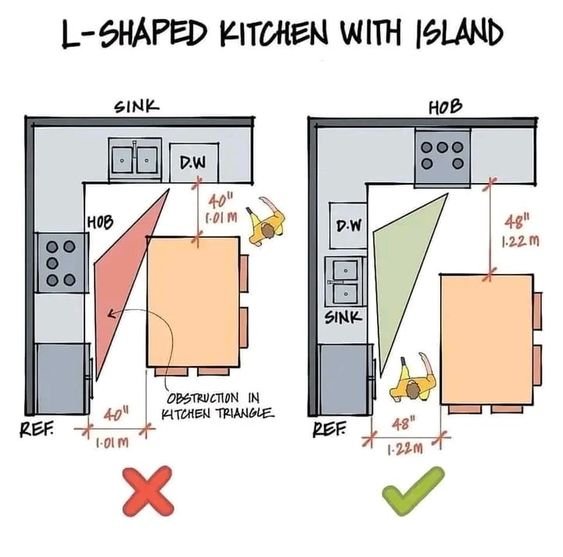
Kitchen islands and peninsulas are popular choices for homeowners who want to add extra counter space and storage to their kitchens. Islands and peninsulas can also serve as a focal point for the kitchen and provide a space for casual dining and entertaining.
Islands
A kitchen island is a freestanding piece of furniture that is typically located in the center of the kitchen. Islands can be used for food preparation, cooking, and storage. They can also be designed to include a sink, dishwasher, or cooktop.
Islands come in a variety of shapes and sizes, including rectangular, square, and L-shaped. They can be made from a variety of materials, including wood, granite, and stainless steel.
Peninsulas
A peninsula is similar to an island, but it is attached to one wall of the kitchen. Peninsulas can be used to create a division between the kitchen and an adjacent room, such as a dining room or living room.
Peninsulas can be designed to include a sink, dishwasher, or cooktop. They can also be used for food preparation, cooking, and storage.
Island vs. Peninsula
When deciding between an island and a peninsula, it is important to consider the size and layout of the kitchen. Islands are ideal for larger kitchens with ample space, while peninsulas are better suited for smaller kitchens or kitchens with an open floor plan.
Islands can provide more counter space and storage, while peninsulas can create a division between the kitchen and an adjacent room. Islands are also more versatile, as they can be moved or reconfigured if needed.
Overall, both islands and peninsulas are great options for homeowners who want to add extra counter space and storage to their kitchens. The choice between an island and a peninsula will depend on the size and layout of the kitchen, as well as the homeowner’s personal preferences and needs.
Designing for Square Footage
When designing a kitchen floor plan, it is important to consider the available square footage. The amount of space available will determine what type of kitchen layout can be used and how much storage and countertop space can be included.
For smaller kitchens, a galley or U-shaped layout may be the best option. These layouts maximize the use of space while still providing ample storage and countertop space. In larger kitchens, an L-shaped or island layout may be more appropriate, as they allow for more open space and can accommodate larger appliances and additional seating.
When designing for square footage, it is important to consider the flow of the kitchen. The placement of appliances, countertops, and storage should be arranged in a way that allows for easy movement and accessibility. This can be achieved through the use of work triangles and zones.

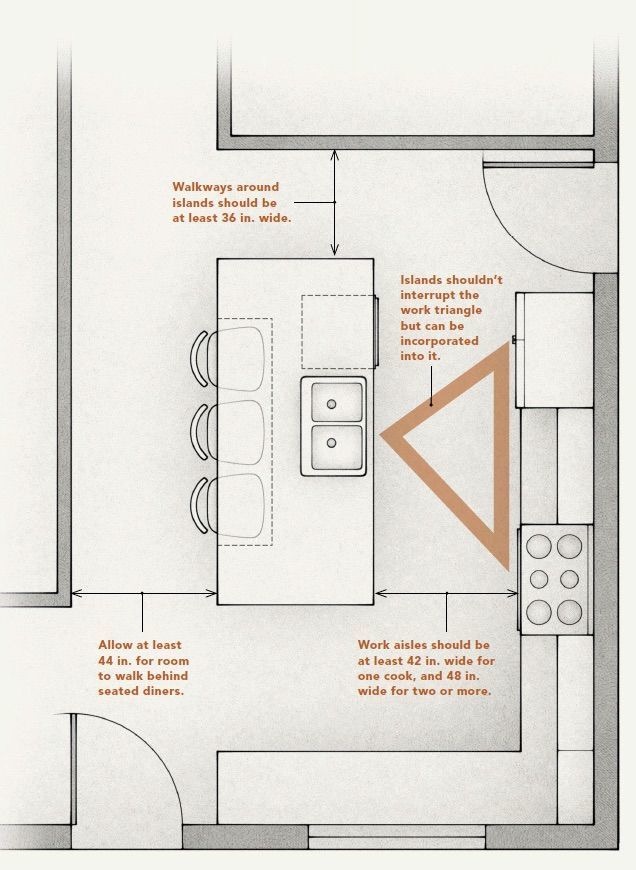
Work triangles are an important aspect of kitchen design and refer to the placement of the sink, stove, and refrigerator in a triangular formation. This allows for efficient movement and reduces the amount of time spent walking between different areas of the kitchen. Zones can also be used to group together similar functions, such as a baking zone or a prep zone.
In addition to the layout and flow of the kitchen, the amount of square footage available will also impact the amount of storage and countertop space that can be included. It is important to maximize vertical space by using tall cabinets and shelves, as well as incorporating storage solutions such as pull-out drawers and lazy susans.
Overall, designing for square footage is an important consideration when creating a kitchen floor plan. By maximizing the use of space and creating an efficient flow, a kitchen can be both functional and aesthetically pleasing.
Planning for Meals and Homework
When designing a kitchen floor plan, it’s important to consider how the space will be used beyond just cooking. Many families use the kitchen as a place to do homework and gather for meals, so it’s important to plan for these activities.
One key element to consider is the placement of the kitchen table or island. This should be centrally located and easily accessible from all areas of the kitchen. If space allows, a separate dining area can also be incorporated into the floor plan.
Another important consideration is storage for homework supplies. This can include a designated drawer or cabinet for pencils, paper, and other materials. A nearby countertop can also be useful for spreading out books and assignments.
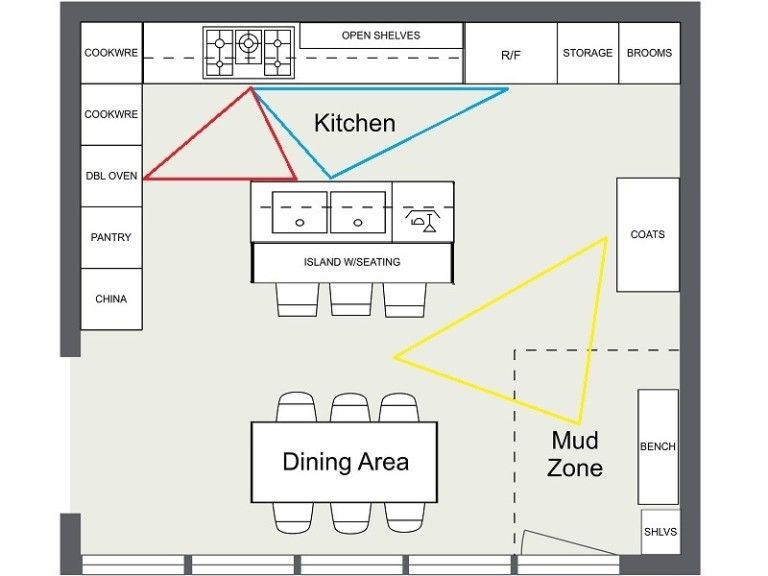

When it comes to meal planning, the layout of the kitchen should allow for easy access to appliances and storage. A well-organized pantry and refrigerator can make meal prep and planning much easier. Additionally, a separate area for meal planning and recipe storage can be useful.
Including a dedicated area for making cocktails like the delightful amaretto sour drink can enhance your kitchen’s versatility. This allows you to easily entertain guests while keeping your cooking space organized and efficient.
Overall, a kitchen floor plan that takes into account the needs of both meal preparation and homework can make the space more functional and enjoyable for the whole family.
Budgeting for Your Kitchen Floor Plan
When planning a kitchen remodel, it’s essential to establish a budget for the project. The kitchen floor plan is a crucial component of the remodel, and it’s essential to allocate a portion of the budget towards it. Here are some tips to help you budget for your kitchen floor plan.
Consider Your Needs
Before you start planning your kitchen floor plan, consider your needs. Think about how you use your kitchen and what features are essential to you. For example, if you love to cook, you may want a larger countertop or a separate cooking area. If you have a large family, you may need a kitchen island for additional seating.
Determine Your Budget
Once you’ve established your needs, determine your budget. The cost of a kitchen floor plan can vary greatly depending on the size of your kitchen, the materials used, and the complexity of the design. A basic kitchen floor plan can cost as little as a few hundred dollars, while a more complex design can cost thousands of dollars. Be sure to factor in the cost of materials, labor, and any additional features you may want.
Shop Around
When budgeting for your kitchen floor plan, it’s essential to shop around. Get quotes from several contractors and compare the costs and services offered. Be sure to ask for references and check reviews online to ensure you’re working with a reputable contractor.
Consider DIY Options
If you’re on a tight budget, consider DIY options for your kitchen floor plan. There are many online resources available that can help you design your kitchen floor plan, and some retailers offer free design services. However, keep in mind that a DIY kitchen floor plan may not be as polished or professional as one designed by a contractor.
By following these tips, you can budget for your kitchen floor plan and create a space that meets your needs and fits your budget.
Considerations for Electrical and Plumbing


When designing a kitchen floor plan, it is important to consider the electrical and plumbing requirements. A well-planned kitchen layout should ensure that all electrical and plumbing needs are met without compromising on functionality and aesthetics.
Electrical
Electrical considerations for a kitchen floor plan include the placement of outlets, switches, and lighting fixtures. The following are some key points to consider:
- Outlets should be placed strategically to ensure that all appliances can be plugged in without the need for extension cords. At least two outlets should be placed on each countertop.
- Switches should be placed in convenient locations for turning on and off lights and ventilation systems.
- Lighting fixtures should be placed to provide adequate illumination for all work areas in the kitchen. Under-cabinet lighting can be a great addition to provide extra lighting for countertop tasks.
Plumbing
Plumbing considerations for a kitchen floor plan include the placement of sinks, faucets, and dishwashers. The following are some key points to consider:
- Sinks should be placed in convenient locations for easy access to water and drainage. It is important to ensure that the sink is not too far away from the dishwasher to avoid long runs of plumbing.
- Faucets should be chosen based on the type of sink and the intended use. For example, a pull-down faucet can be convenient for washing large pots and pans.
- Dishwashers should be placed near the sink for easy access to water and drainage. It is important to ensure that there is enough space to load and unload the dishwasher without obstructing other work areas.
In summary, when designing a kitchen floor plan, it is important to consider the electrical and plumbing requirements to ensure that the kitchen is functional and meets all of the user’s needs.
Remodeling Your Kitchen
Remodeling your kitchen can be an exciting but daunting task. There are many things to consider, from the kitchen design and layout to the budget and appliances. One of the most important aspects of a kitchen remodel is the floor plan, which can greatly impact the functionality and flow of the space.
When planning your kitchen floor plan, consider the work triangle, which is the area between the sink, stove, and refrigerator. This area should be designed for efficiency and ease of movement. A well-designed work triangle can make cooking and preparing meals much easier and more enjoyable.
Another important aspect of a kitchen floor plan is storage. Cabinets and counters should be strategically placed to maximize storage and accessibility. Consider incorporating features such as pull-out shelves, lazy susans, and built-in organizers to make the most of your storage space.

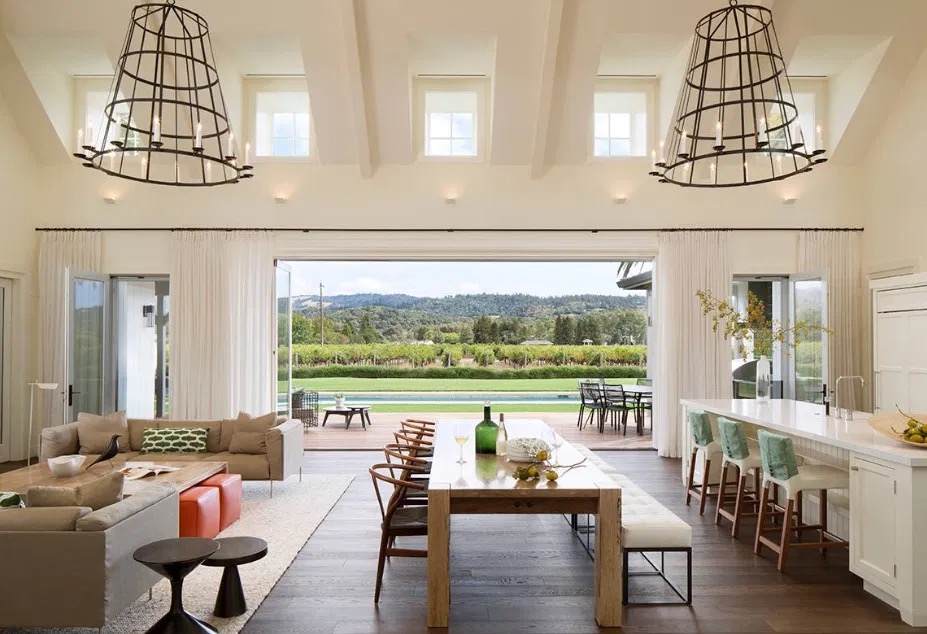
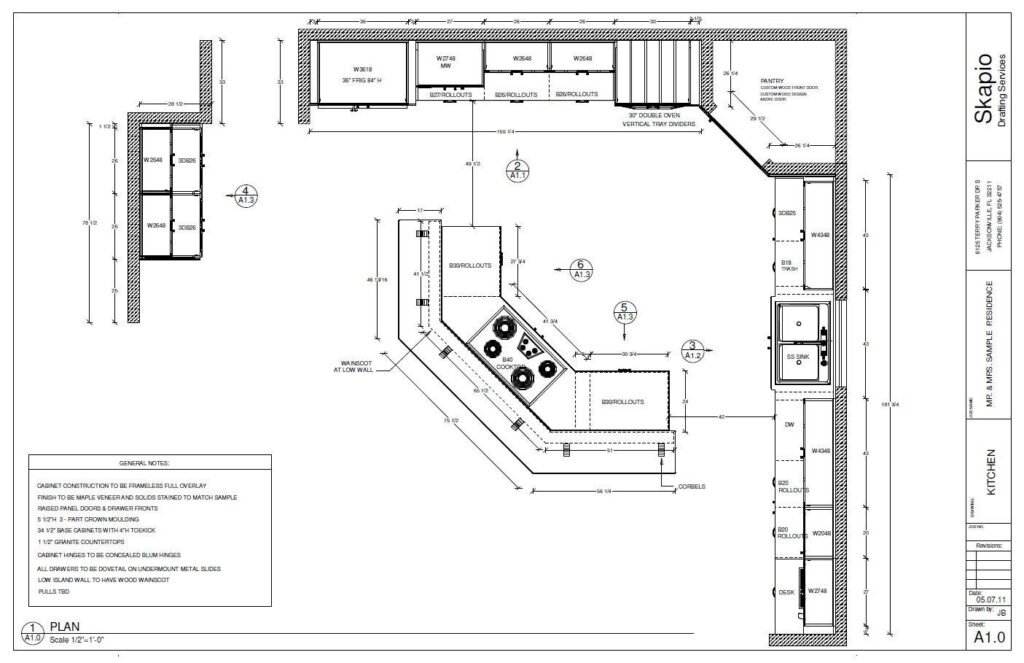
When choosing appliances, consider both functionality and aesthetics. Appliances should be placed in a way that makes sense for the layout of your kitchen. For example, the dishwasher should be located near the sink for easy access to water and drainage.
Finally, don’t forget about the overall design and style of your kitchen. Cabinets, countertops, and flooring should all work together to create a cohesive look. Consider adding bold accents or unique features to add personality to your space.
Overall, a well-designed kitchen floor plan can greatly enhance the functionality and enjoyment of your space. By considering factors such as the work triangle, storage, and appliances, you can create a kitchen that is both beautiful and functional.
Conclusion
In conclusion, choosing the right kitchen floor plan is essential for creating a functional and efficient space. It is important to consider the size and shape of the kitchen, as well as the needs and lifestyle of the homeowner.
When designing a kitchen floor plan, it is important to prioritize functionality and flow. The work triangle is a useful concept to keep in mind, as it ensures that the stove, sink, and refrigerator are easily accessible and in close proximity to each other.
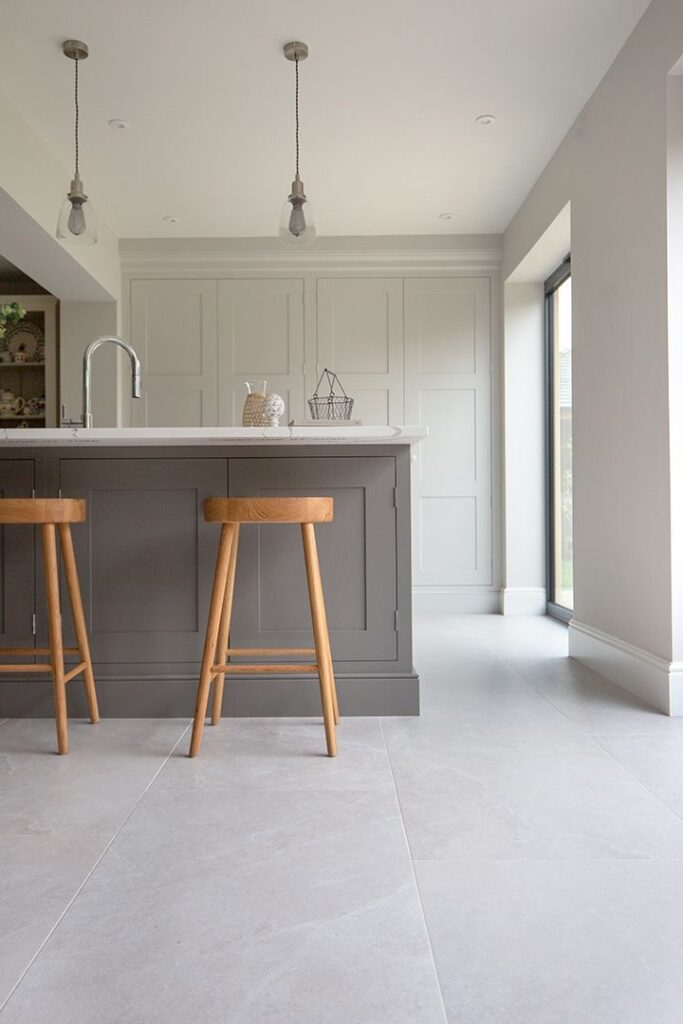
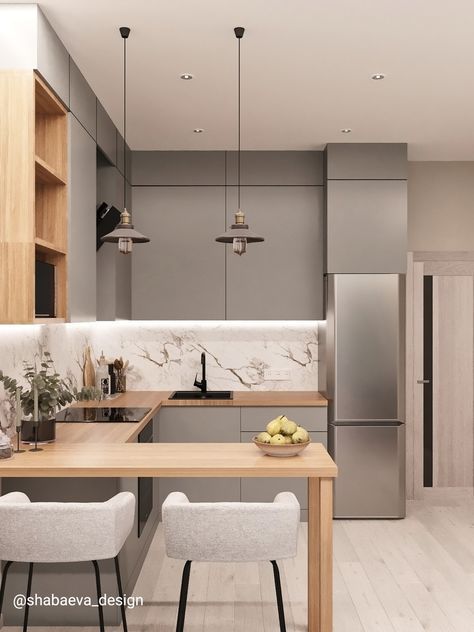
Another important consideration is storage. Adequate storage is necessary for keeping the kitchen organized and clutter-free. Cabinets, drawers, and pantry space should be carefully planned to ensure that there is enough room for all necessary items.
Finally, the aesthetic appeal of the kitchen should not be overlooked. The right color scheme, flooring, and lighting can make a big difference in creating a comfortable and inviting space.


Overall, a well-designed kitchen floor plan can make cooking and entertaining more enjoyable, while also adding value to the home.
Frequently Asked Questions
What are the different types of kitchen layouts?
There are several different types of kitchen layouts, including the U-shaped, L-shaped, galley, one-wall, and island kitchen layouts. Each layout has its own advantages and disadvantages, and the best choice will depend on your individual needs and preferences.
How can I design my own kitchen layout?
To design your own kitchen layout, start by measuring the space and creating a floor plan. Consider your needs and preferences, and choose a layout that will work best for you. You can also use free online tools to help you create a 3D model of your kitchen and experiment with different layouts.
What are some popular kitchen floor plan symbols?
Common symbols used in kitchen floor plans include the sink, stove, refrigerator, dishwasher, and kitchen island. Other symbols may include cabinets, countertops, and lighting fixtures.
What are some tips for creating an efficient kitchen setup?
To create an efficient kitchen setup, consider the work triangle between the sink, stove, and refrigerator. Make sure there is enough counter space for food preparation and storage, and consider the location of electrical outlets and lighting fixtures. Choose appliances that are energy-efficient and easy to clean.
What are the most desirable features of a kitchen floor plan?
The most desirable features of a kitchen floor plan will depend on your individual needs and preferences. However, some popular features include an open layout, ample counter and storage space, high-quality appliances, and a functional work triangle.
What are some free tools for designing kitchen layouts?
There are several free online tools available for designing kitchen layouts, including RoomSketcher, IKEA Home Planner, and Planner 5D. These tools allow you to create a 3D model of your kitchen and experiment with different layouts and design elements.
- 2.6Kshares
- Facebook0
- Pinterest2.6K
- Twitter0


